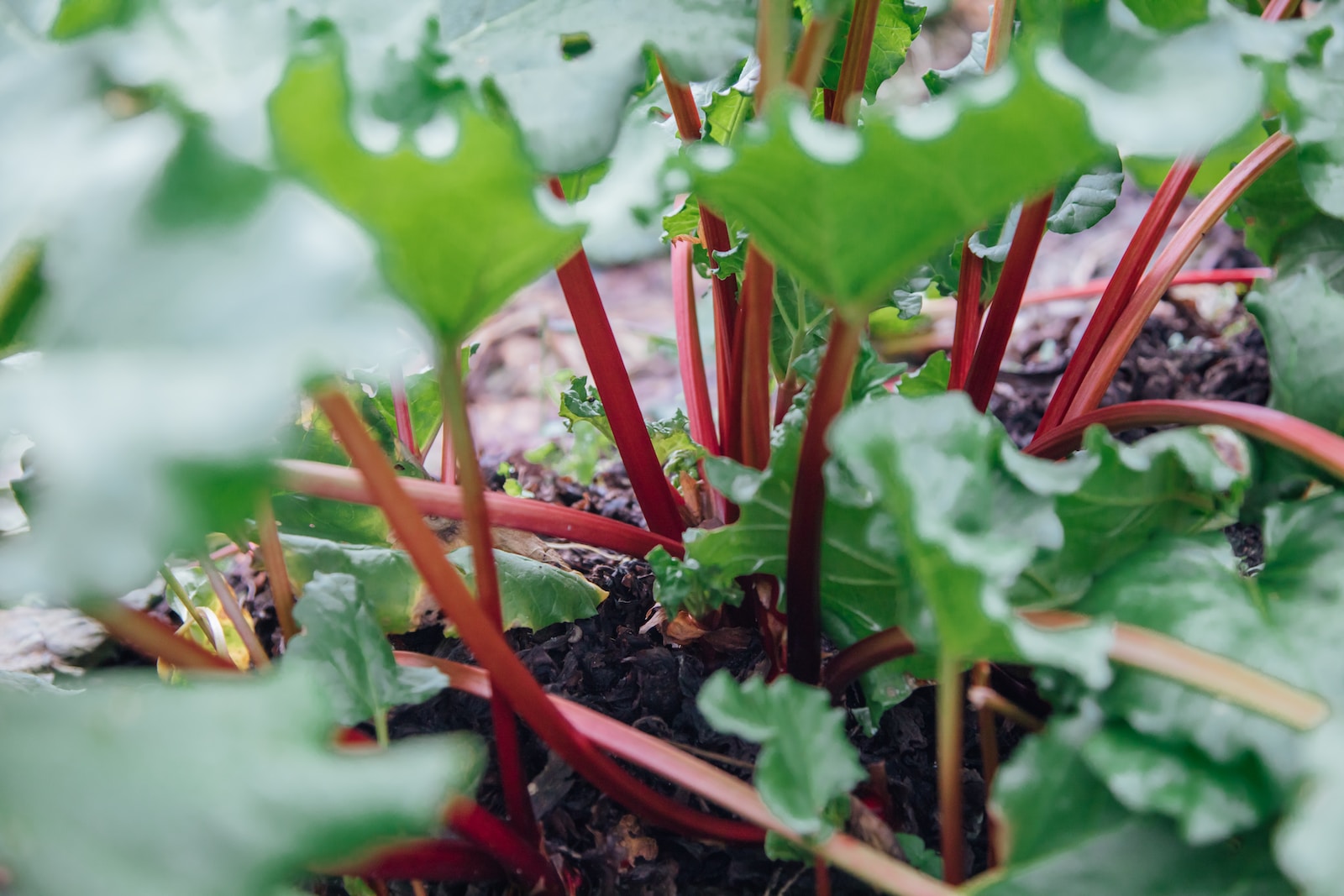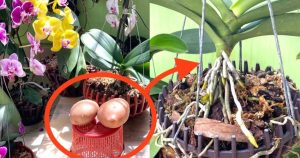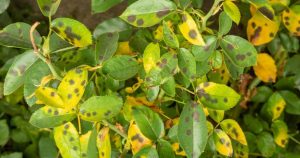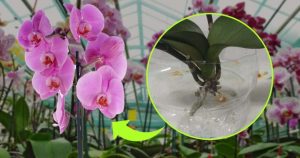Growing fruits and vegetables can be a rewarding venture, but the scorching heat and fluctuating weather in Oklahoma can pose unique challenges to gardening enthusiasts, especially if you are a beginning gardener. Check out these shade fruits and vegetables to grow in Oklahoma.
Oklahoma Shade Plants
Some plants thrive under the cover of larger plants or structures, preferring the shelter that shadows provide. In the diverse climate of Oklahoma, shade gardening can become a successful endeavor, offering choices ranging from leafy greens to succulent fruits.
Shade fruits and vegetables typically require less sunlight, with some varieties thriving in as little as 3-6 hours of sunlight per day, making them suitable for locations with substantial shade.
Shade fruits and vegetables
Oklahoma’s geographical location in the central part of the United States means it experiences a temperate climate, with regions varying from arid to humid, making it essential to choose plant varieties that can tolerate these conditions.
The shade vegetables and fruits listed here are well-suited to the diverse climate conditions of the state and are known for their resilience and adaptability to shaded growing environments.
- Leafy Greens
- Herbs:
- Mint: This aromatic herb can flourish in shady areas and is known for its rapid growth.
- Parsley: A versatile culinary herb, it can tolerate partial to full shade.
- Fruits
- Root Vegetables
- Miscellaneous:
- Rhubarb: This shade-loving perennial prefers cooler climates and does well in partial shade.
- Alpine Strawberries: These small, flavorful berries prefer cool, shaded locations.
When embracing shade gardening in Oklahoma, it’s essential to consider the variations in climate across the state and the specific needs of each plant variety. It’s crucial to monitor soil moisture and fertility, ensure proper spacing, and utilize companion planting to manage pests and diseases.
Shade gardening offers a sustainable approach to cultivating fruits and vegetables in Oklahoma, allowing gardeners to maximize their yield by utilizing every corner of their available space, even those not bathed in sunlight. By embracing the shade, growers can enjoy a diverse, resilient, and productive garden throughout the varying climates and conditions presented in Oklahoma.
For a list of what to plant year round, check out this month by month garden planting guide.
Vegetables that thrive in shade
While no vegetables can grow in complete darkness, several thrive or are tolerant to partial shade, where they receive filtered sunlight or only 3 to 6 hours of direct sunlight per day. Here is a list of vegetables that are known to do well in shaded conditions:
- Leafy Greens:
- Lettuce: Prefers cooler temperatures and can grow well in partial shade.
- Spinach: This cool-season crop does well in the shade and can help in producing tender leaves.
- Kale: Kale is robust and can tolerate partial shade.
- Swiss Chard: Its colorful stems and leaves can brighten up shaded areas, and it can thrive with limited sunlight.
- Arugula: Known for its peppery flavor, arugula can flourish in partial shade.
- Root Vegetables:
- Radishes: These grow quickly and can tolerate shade.
- Beets: Beets can grow in partial shade, though they may take longer to mature.
- Carrots: While they prefer full sun, they can tolerate light shade.
- Turnips: These can do reasonably well in partial shade.
- Other Vegetables:
- Peas: These cool-season crops can do well in partial shade.
- Brussels Sprouts: These can tolerate partial shade, especially in regions with hotter climates.
- Broccoli: It can handle partial shade, particularly in areas with hot summers.
- Cauliflower: Like broccoli, cauliflower can also tolerate partial shade.
- Scallions: These can grow in light shade and are a valuable addition to many dishes.
Summer shade vegetables
Growing vegetables in the shade during the summer can be beneficial as it can protect plants from the intense heat and sun, especially in regions with hot climates. The summers are so hot in Oklahoma that even tomatoes can benefit from some shade. Planting them next to tall vegetables such as corn can be a great benefit to them.
Many vegetable plants can benefit from shade in the evening time from the western sun for sure. But that’s not what we consider partial shade. If the plants get 8 hours of sunlight a day, that’s considered full sun. Partial shade is less sunlight. If the plants get direct sun 3-6 hours a day it’s considered partial shade.
Best vegetables to grow in partial shade
Generally, plants that are grown for their leaves are the best candidates for partial shade.
- Collard Greens: Similar to kale, but with a smoother leaf.
- Mustard Greens: Offers a spicy flavor and likes cooler temperatures.
- Arugula: Prefers cooler temperatures.
- Bok choy, tatsoi, and other Asian greens can do quite well in partial shade.
- Mint: Actually prefers a bit of shade.
- Parsley: Does well in light shade.
- Cilantro: Prefers cooler temperatures.
- Chives: Tolerant of shade.
- Lemon Balm: Can thrive in both full sun and partial shade.
- Peas: While they appreciate sunlight, they can produce decently in partial shade, especially in cooler climates.
- Broccoli and Cauliflower: These cool-season crops can handle partial shade, but expect them to mature a bit slower.
- Brussels Sprouts: Another cool-season vegetable that can cope with some shade.
Shade perennials for Oklahoma
Here are some perennial vegetables that can tolerate shade and might be suitable for Oklahoma gardens:
- Sorrel: This tangy, leafy green can tolerate partial shade. The French sorrel (Rumex scutatus) is particularly known for culinary uses.
- Asparagus: While it prefers full sun, asparagus can tolerate partial shade. However, in shadier conditions, it may produce fewer spears.
- Ramps or Wild Leeks: These woodland native plants naturally grow under the forest canopy, making them a suitable choice for shady spots.
- Jerusalem Artichoke: Also known as sunchokes, these produce edible tubers. They prefer full sun but can handle a bit of shade.
- Good King Henry: An old European perennial vegetable, the young shoots and leaves can be eaten like spinach. It can tolerate partial shade.
- Welsh Onion: This perennial bunching onion can handle less sun than most other alliums.
- Perennial leeks: Once established, you can harvest them year after year.
When exploring perennial vegetables for shady spots in Oklahoma, it’s essential to keep in mind your specific garden conditions, including soil quality, moisture levels, and exact light conditions.
Fruits that grow in shade
- Currants: Both red and black currants can handle some shade and will produce sweet-tart berries.
- Gooseberries: Like currants, gooseberries can tolerate some shade, although they might produce fewer fruits in such conditions.
- Alpine Strawberries: These produce smaller berries than the typical garden strawberry but can manage in less sunny spots.
- Raspberries: While they prefer full sun, they can tolerate partial shade. Fruit yield might be reduced in shaded areas.
- Elderberries: Elderberry shrubs can handle partial shade and produce clusters of dark berries used for making jellies, wines, and syrups.
- Serviceberry: Also known as Juneberry or Saskatoon, these shrubs or small trees produce blueberry-like fruits.
- Pawpaw: A native North American fruit that naturally grows as an understory tree in woodlands. They produce large, creamy-textured fruits.
- Kiwi: There are varieties, like the hardy kiwi, that can produce well in partial shade.
- Mulberry: These trees are quite adaptable and can produce fruit in partial shade.
- Rhubarb: While not a fruit, it’s often used like one in culinary dishes. Rhubarb can handle some shade but may produce thinner stalks in such conditions.
Can carrots grow in shade
Carrots prefer full sun, which means they thrive best with 6-8 hours of direct sunlight each day. However, they can tolerate partial shade.
When grown in partial shade:
- Slower Growth: Carrots will likely take longer to reach maturity. The lack of adequate sunlight can slow down their growth rate.
- Smaller Size: Carrots grown in shaded conditions might be smaller than those grown in full sun.
- Flavor and Texture: The taste might be slightly different than carrots grown in full sun. In some cases, shade-grown carrots might be less sweet or have a more fibrous texture.
- Leaf Growth: You might notice more foliage growth and less root development, as the plant may prioritize leaf growth to maximize photosynthesis in lower light conditions.
If you decide to try growing carrots in a shaded area, here are some tips:
- Choose Early Varieties: Opt for carrot varieties that have a shorter maturation time. These might be more successful in less-than-ideal sunlight conditions.
- Soil Preparation: Ensure that the soil is well-draining and rich in organic matter. Carrots need loose, sandy soil for best root development.
- Regular Watering: Consistent moisture is essential for carrot development. However, avoid waterlogged conditions as this can lead to root rot.
- Monitor Growth: Keep an eye on your carrots. Due to the reduced light, they might be more susceptible to pests or diseases.
- Maximize Light: Even if the area is shaded, try to maximize the light that your carrots receive. This might involve trimming or pruning overhanging branches from nearby trees or using reflective materials to direct more sunlight onto your carrot patch.
Does spinach grow in shade?
Yes, spinach can grow in shade, especially partial shade. In fact, in regions with hot summers, a bit of shade can actually benefit spinach plants by preventing them from bolting (going to seed) too quickly.
Here’s what you need to know about growing spinach in shade:
- Partial Shade: Spinach does best in partial shade, which means it gets about 3 to 6 hours of sunlight a day. In these conditions, spinach can produce a good yield of tender leaves.
- Bolting: Spinach has a tendency to bolt when the days get longer and temperatures rise. Growing spinach in a location with some shade can help prolong the harvest period by keeping the plants a bit cooler.
- Growth Rate: While spinach can tolerate shade, its growth might be slower in lower light conditions compared to full sun. The leaves might also be slightly smaller.
- Full Shade: Growing spinach in full shade (less than 3 hours of direct sunlight a day) isn’t ideal. The plants may become leggy as they stretch for light, and the yield will be reduced.
- Succession Planting: To ensure a consistent supply of spinach, practice succession planting. Sow a new batch of seeds every couple of weeks. This is especially helpful in shaded areas where growth might be slower.
- Soil and Water: Regardless of the light conditions, spinach needs well-draining soil rich in organic matter. Keep the soil consistently moist, but avoid waterlogged conditions.
- Varieties: Some spinach varieties might be more adaptable to shade than others. Consult local nurseries or extension services for recommendations suited to your area.
Nasturtium sun or shade
Nasturtiums are versatile plants that can tolerate a range of sunlight conditions. They are edible and make a gorgeous addition to your dishes. There are some nuances to their preference:
- Sunlight Preference: Nasturtiums prefer full sun to partial shade. In full sun, they tend to produce more flowers.
- Hot Climates: In areas with intense summer heat, nasturtiums appreciate some afternoon shade to protect them from scorching.
- Cool Climates: In cooler climates or during the cooler parts of the growing season, full sun is ideal for robust growth and flowering.
- Shade Tolerance: While they can grow in partial shade, the number of flowers may decrease, and the plants might become leggier as they reach for more light.
- Soil and Watering: Nasturtiums are quite adaptable but prefer well-draining soil. Interestingly, they tend to produce more flowers in poorer soils. Over-fertilizing can lead to lush foliage but fewer blooms. Regular watering is essential but avoid waterlogged conditions.
- Climbing vs. Bush Varieties: Some nasturtiums are climbers and can be trained up trellises or fences. Others are bush-type varieties that work well for borders or containers. The sunlight needs for both types are similar, but the climbing varieties might provide more shading opportunities when used on trellises.
I hope you are inspired to try growing some things in less sunny areas if you need more space to grow. Making sure you pick the right variety is the key to success with shade gardening. And remember that shade gardening doesn’t mean total shade all the time but some shelter from the sun during each day. Happy gardening!







